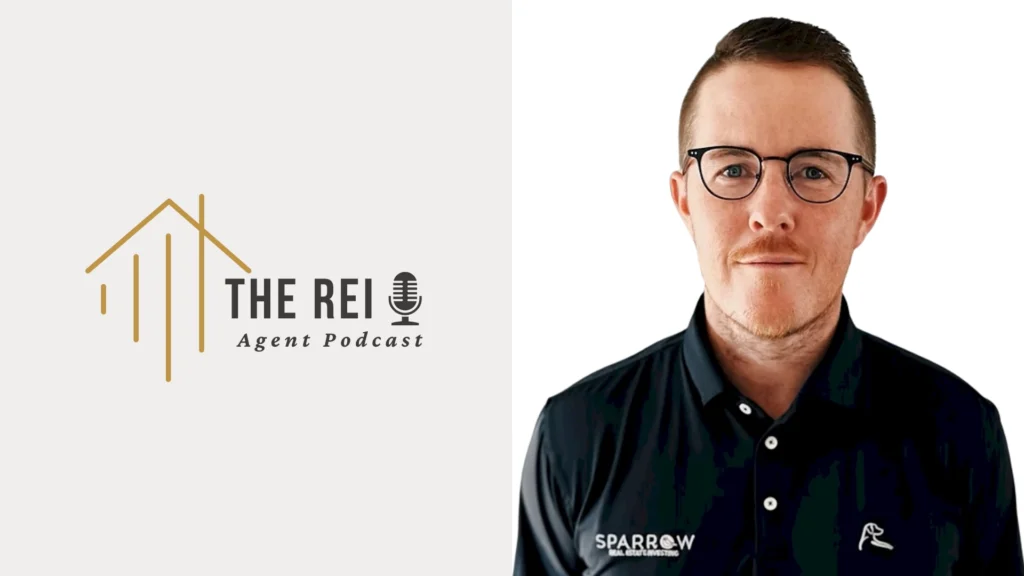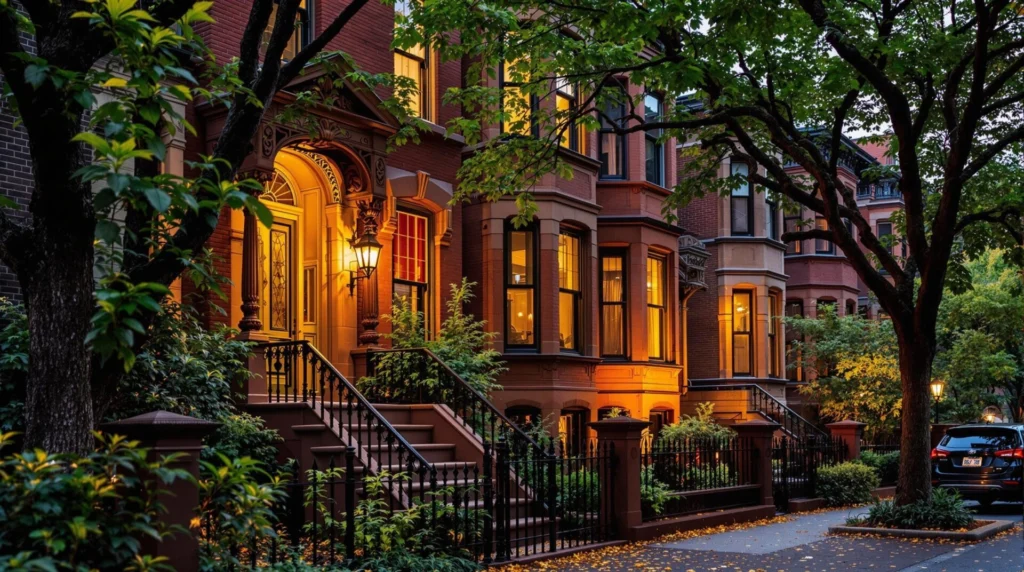Key Takeaways
- Hope Village in Baltimore proves tiny homes can offer scalable, affordable solutions to America’s deepening housing crisis.
- Tariffs and inflation are dramatically increasing construction costs, squeezing both builders and buyers.
- Tiny home manufacturers like Boxabl are redefining affordability and creating new pathways for investor profits.

What if the future of housing in America isn’t towering skyscrapers or sprawling suburbs… but 400 square feet of hope?
In East Baltimore, 13 tiny homes are doing what trillion-dollar housing policies have failed to do—create actual affordable housing.
In a nation where buying a home feels like chasing a ghost, Hope Village has become a real estate investor’s wake-up call—and a potential goldmine blueprint for the future.
And while these 13 homes might seem like a drop in the bucket, they could be the spark that ignites a nationwide wildfire of opportunity.
Tiny Homes Rise as Housing Giants Collapse
In a U.S. market paralyzed by inflation, construction slowdowns, and skyrocketing costs, one couple just sidestepped it all—with their own money.
Chris and Pam Wilson, armed with a vision and a $1.7 million investment, built Hope Village: 13 fully furnished, solar-powered homes sold at $25,000 each, with a 5% interest rate.
No gimmicks.
No corporate backing.
These are just actual affordable homes for people earning as little as $18 an hour.
The homes are beautiful.
They’re functional.
They’re built to fight homelessness head-on, while giving real estate investors a serious dose of inspiration—and competition.
The Numbers That Should Make You Panic
Let’s get brutally honest:
- Single-family housing starts are down 14.2% in March 2025, hitting an eight-month low
- Tariffs on building materials have added nearly $11,000 to the cost of every new home
- Inflation just won’t die, eroding what little purchasing power Americans still have
- Wages have flatlined, while housing prices continue to skyrocket
- Meanwhile, Boxabl has a waitlist of 70,000 people for homes under $20K
Tariffs Are Quietly Gutting Housing Affordability
Don’t let the headlines fool you—tariffs are bleeding the housing market dry.
With steel, lumber, and appliances taxed up to 25%, developers are either halting projects or passing the cost onto buyers. And who’s paying the price? Working-class Americans—and the investors trying to serve them.
Household budgets are absorbing a $3,800 annual blow, and even modular housing developers like Boxabl are feeling the pressure.
While their Baby Box starts at $19,999, their Boxabl Studio—designed for full-time, off-grid living—now starts at $60,000 due to material constraints.
The War Between Wages and Housing Costs
Productivity is up. Housing costs are up. But wages? Still stuck in 2015.
The average worker’s paycheck hasn’t budged, while the price of everything—especially homes—has exploded.
RELATED CONTENT
The Consumer Price Index is up 2.4% this year alone.
Investors can’t ignore this trend: the average American can’t afford to buy a home, and that makes long-term rental demand red-hot.
But even the rental market is bursting at the seams.
So what fills the gap?
The Rise of the Tiny Titans
America’s real estate future may be micro in size, but massive in impact.
From factory-folded homes to luxurious on-wheels cabins, these builders are taking over:
- Boxabl (Las Vegas, NV) – Baby Box ($19,999) & Boxabl Studio ($60,000+)
- Tumbleweed Tiny House Co. (CO) – Rolling homes for nomads
- ESCAPE Homes (WI) – Energy-efficient, minimalist havens
- New Frontier Design (TN) – Tiny homes with luxury finishes
- Mint Tiny House Co. (WA) – Rustic & modern hybrids
- Minimaliste (VT) – Built for extreme weather
- Wheelhaus (ID), Indigo River (TX), Tiny Heirloom (OR), Liberation Tiny Homes (PA)
Some serve niche markets. Others have mass appeal. But they all offer lower-cost alternatives that reduce dependency on traditional construction and slash investor entry costs.
A Movement Bigger Than 400 Square Feet
Hope Village is no one-off miracle. It’s the prototype for what could—and should—be replicated across every city struggling with homelessness and unaffordable housing.
The Wilsons are already planning Hope Village II, aiming for completion by 2031. But real estate investors don’t have to wait that long.
This is your signal.
The market is broken, and tiny homes aren’t just a fix—they’re an opportunity to build, flip, and cash flow in ways traditional housing can’t touch right now.
Discover the Ultimate Retreat: Introducing the LUNA Park Model Home – Luxury Redefined!
Join us for an exclusive look at the unveiling of the Luna Park Model Home, where designer David Latimer reveals his inspiration behind this innovative design and showcases its remarkable features. Inspired by the celestial beauty of a solar eclipse, this park model home offers a unique blend of luxury and sustainability, providing a minimalist retreat immersed in nature.
This brand new Luna Park Model Home is the result of a new partnership between New Frontier Design and Zook Cabins. This collaboration brings together David’s passion and expertise in design with Zook’s dedication to quality and efficiency to offer you the best in the park model experience.
David Latimer, founder and primary creative at New Frontier Design, takes us on a journey through the thought process behind the Luna Park Model Home. Drawing inspiration from the ethereal spectacle of a solar eclipse, Latimer shares how he sought to capture the essence of this awe-inspiring event in each aspect of the design. From the sleek exterior to the warm interior, every detail reflects the beauty and tranquility of nature. Latimer guides us through the thoughtfully crafted living area, highlighting the clever utilization of space and the abundance of natural light that floods the interior. The huge window-wall and other large windows frame breathtaking views of the surrounding landscape, offering a sanctuary for those seeking solace amidst the chaos of modern life. In addition to natural lighting, carefully placed valence lights cast warm rays over the surfaces, emulating the solar eclipse.
But what truly sets the Luna Park Model Home apart is its ability to foster a deep connection to the natural world. As David Latimer reveals the features of the Luna Park Model Home, it becomes clear that this isn’t just a place to live—it’s a lifestyle. It’s about embracing simplicity and mindfulness, and finding joy in the simple pleasures of life. It’s about reconnecting with ourselves and the world around us, and rediscovering the beauty and wonder of nature.
Ready to experience the magic of the Luna Park Model Home for yourself? Visit Zook Cabins Park Models to learn more and start your journey towards minimalist living and reconnecting with nature. You can also reach out to us directly at (610) 593-4556 for more information. Don’t miss out on this opportunity to make the Luna Park Model Home your own personal oasis in the heart of nature, or offer it to others as a unique short-term experiential hospitality venue.
This video is used under the Creative Commons Attribution license (CC BY).
Assessment
The current U.S. housing crisis is a convergence of economic pressure points: inflation, material tariffs, and wage stagnation.
Yet, projects like Hope Village demonstrate that tiny home developments may become the most scalable, investor-friendly model of the decade.
With minimal build costs, shorter zoning timelines, and increasing demand from cost-burdened renters and first-time buyers, real estate investors would be wise to explore tiny home developments and partnerships.
The ROI may not lie in square footage, but in scalability, speed, and social impact.
Related Content:
- The Mirage at Desert Pines: Is Las Vegas’s “Biggest Housing Project Ever” a Dangerous Gamble in Disguise?
- Las Vegas Housing Market Shatters Records Amid Economic Turmoil
- Docked Downfall! Potential Co-Living Collapse of America’s Shared Housing Revolution
- Shocking Decline of Starter Homes (Increasing Crisis for First-Time Buyers)





















